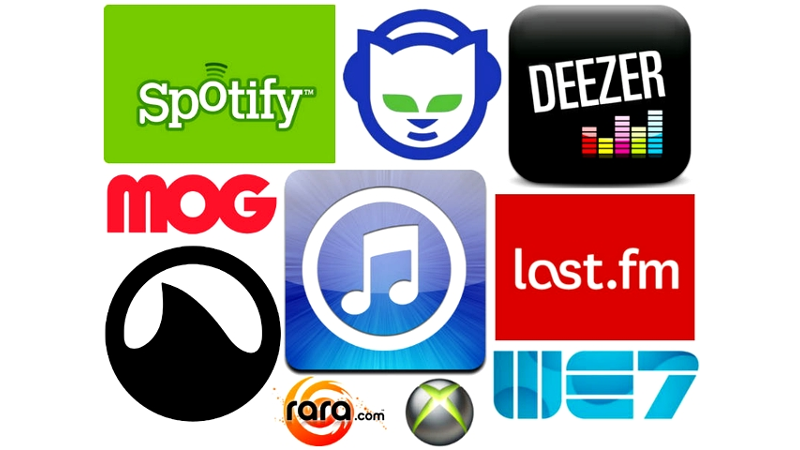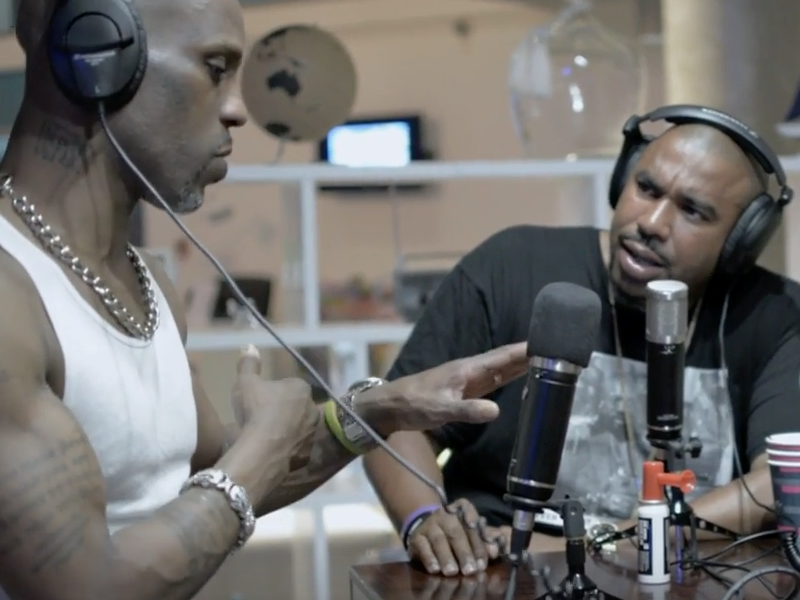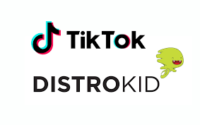What Is Hip Hop Culture All About?
Hip Hop, a cultural phenomenon that emerged from the vibrant streets of the South Bronx in the 1970s, has transcended its humble beginnings to become a global force influencing music, fashion, and societal norms.
Rooted in creativity, self-expression, and resilience, Hip Hop is not merely a genre of music; it is a multifaceted cultural movement that has shaped the identity of communities and individuals around the world.
This article is sort of a “What is Hop Hop Culture Essay” and it delves into the essence of Hip Hop culture, exploring its origins, key elements, global impact, and its continued relevance in contemporary society.
What Is The Definition of Hip Hop Culture?
So, what is hip hop culture in America and around the world? At its core, Hip Hop is more than just a genre of music; it is a holistic cultural expression that encompasses various art forms and social practices. It serves as a platform for marginalized voices to articulate their experiences, challenges, and aspirations.
Some often ask what is the purpose of hip hop? The simple answer is that Hip hop believes that people can take control of their lives through self-knowledge and self-expression.
Self expression allows one to feel liberated though the expression of their thoughts, feelings, ideas, and art. Self-knowledge can exude confidence and make one feel worthy in a world filled with negativity and pessimism.
Hip Hop culture consists of four primary elements, often referred to as the “Four Pillars of Hip Hop“: MCing (rapping), DJing (turntablism), Breaking (b-boying/b-girling), and Graffiti art. Each of these elements contributes to the rich dynamics that define the culture.
.Rapping (Mcing)
Rapping, a fundamental element of Hip Hop culture, is a rhythmic and poetic vocal delivery typically performed over a musical backdrop, known as a beat or instrumental.
Also referred to as MCing (Master of Ceremonies) or emceeing, rapping involves the use of intricate rhymes, wordplay, and rhythmic patterns to convey a message or tell a story.
At its core, rapping is a form of self-expression, allowing artists to communicate their thoughts, experiences, and perspectives.
The lyrical content can range from personal narratives and social commentary to playful boasts and intricate metaphors. Rappers often use their verses to address societal issues, share personal struggles, or showcase their lyrical prowess.

Dj (Turntabilsm)
A hip hop DJ, often referred to as a "turntablist" or "Hip Hop DJ," plays a crucial role in the dynamic world of Hip Hop culture. Unlike traditional DJs who primarily mix and blend music for dance floors, a Rap DJ is instrumental in the creation and performance of Hip Hop music, contributing to the genre's unique sound and identity.
Key Responsibilities of a Rap DJ:
- Beat Production: A Rap DJ is not just a selector of records but a creator of beats. They use turntables, mixers, and other equipment to manipulate vinyl records, samples, and loops, creating the distinctive beats that serve as the foundation for rap songs.
- Scratching: Scratching is a signature technique used by Rap DJs. It involves manipulating a vinyl record back and forth on a turntable while using a crossfader on a mixer to create rhythmic, percussive sounds. Scratching adds a dynamic and expressive element to the music.
- Sampling: Rap DJs are often involved in the art of sampling, taking snippets of sound from various sources, including other songs, speeches, or sound effects, and incorporating them into the music. This sampling technique is integral to the creation of unique and innovative Hip Hop tracks.
- Live Performances: Rap DJs play a central role in live performances, collaborating with MCs (rappers) to create an electrifying stage presence. Their ability to seamlessly blend beats, scratch, and manipulate sounds in real-time enhances the overall impact of a live Hip Hop show.
- Collaboration with MCs: Rap DJs often work closely with MCs to create a symbiotic relationship during performances. The DJ provides the musical backdrop for the rapper's lyrics, contributing to the overall synergy of the act.
- Innovation and Experimentation: The best Rap DJs are known for their innovation and experimentation. They constantly push the boundaries of what is possible with turntables and other equipment, contributing to the evolution of the Hip Hop sound.
Breaking (B-boying)
Breakdancing, often referred to as "b-boying" or "breaking," is a dynamic and acrobatic form of street dance that originated within the Hip Hop culture in the South Bronx, New York City, during the 1970s.
It is one of the four fundamental elements of Hip Hop, alongside MCing (rapping), DJing (turntablism), and graffiti art. Over the years, breakdancing has evolved into a global phenomenon, with dedicated practitioners and competitions worldwide.
It has also influenced mainstream culture, impacting music videos, movies, and even elements of popular dance styles.
Breakdancing, or b-boying, continues to thrive as a vibrant and expressive art form, maintaining its roots in Hip Hop while evolving through the innovation and creativity of dancers around the world.
Graffiti Art
Hip Hop graffiti art, is a visual form of expression that emerged as a prominent element of the Hip Hop cultural movement that began in the 70's. As mentioned before it is one of the elements that make up the hip hop culture.
Graffiti involves the creation of artistic and often intricate images or lettering on public surfaces such as walls, buildings, and trains. Graffiti art is a powerful means of communication, showcasing the creativity, identity, and sociopolitical commentary of its creators. One of the biggest pioneers of graffiti is Fab 5 Freddy.
The Beginning Of Hip Hop Music
The roots of Hip Hop can be traced back to the South Bronx in New York City during the tumultuous 1970s. A backdrop of economic decline, social unrest, and limited opportunities fueled the creativity of black marginalized youth.
In this challenging environment, the foundational elements of Hip Hop culture began to take shape. DJ Kool Herc, who is a Jamaican-American, and is hailed as the "Father of Hip Hop," played a pivotal role in shaping the culture by hosting block parties where he extended the instrumental breaks of songs, providing a rhythmic foundation for MCs and dancers.
In the 1980s, Hip Hop underwent a transformative phase as it transitioned from its grassroots beginnings in the South Bronx to a cultural phenomenon that permeated mainstream consciousness.
This period witnessed the genre's expansion beyond local block parties and underground scenes, with artists breaking new ground and creating timeless contributions to the Hip Hop narrative.
One pivotal moment during this era was the release of "Rapper's Delight" by The Sugarhill Gang in 1979. The song marked the first commercial success for rap music, introducing the world to the infectious rhymes and rhythmic beats that defined the genre. "Rapper's Delight" not only became a chart-topping hit but also opened the doors for Hip Hop to enter the mainstream music landscape.
.Grandmaster Flash and the Furious Five further propelled Hip Hop into the limelight with their 1982 release, "The Message." This groundbreaking track addressed social issues and urban realities with a raw and unfiltered narrative.
"The Message" marked a departure from the party-centric themes of early Hip Hop, showcasing the genre's capacity for social commentary and storytelling. The success of this single demonstrated that Hip Hop could be a powerful medium for expressing the struggles and challenges of marginalized communities.
Breakdancing, a fundamental element of Hip Hop culture, began in the streets in the 1970s but gained prominence in the 1980s. Films like "Breakin'" and "Beat Street" brought breakdancing into mainstream visual culture, captivating audiences with the dynamic and acrobatic movements of b-boys and b-girls.
These films not only showcased the dance form but also contributed to the fashion and style associated with Hip Hop, influencing youth culture globally.
The 1980s also witnessed the emergence of distinct regional styles within Hip Hop. The West Coast and East Coast began to develop unique sounds and cultural identities, setting the stage for the later East Coast-West Coast rivalry that would define the 1990s.
Hip Hop's regional diversity became a testament to its ability to adapt and evolve, reflecting the myriad experiences of urban life across the United States.
As the decade progressed, Hip Hop's influence expanded beyond music and dance, permeating fashion, art, and language. The iconic gold chains, Kangol hats, and Adidas tracksuits became synonymous with Hip Hop style. Graffiti art, another integral component of the culture, adorned urban landscapes, transforming city walls into vibrant canvases that reflected the creative spirit of the movement.
This was early hip hop and it was adorned globally and still is the most prominent music genre on the face of the planter.
The Golden Age of Hip Hop
The 1990s marked a pivotal period in Hip Hop history, often referred to as the "Golden Era," characterized by artistic innovation, cultural prominence, and global expansion.
The 1990s witnessed a flourishing of artistic creativity and diversity within the Hip Hop genre. Artists pushed the boundaries of lyrical and musical innovation, experimenting with new sounds, styles, and subject matter.
From the conscious lyricism of groups like A Tribe Called Quest and De La Soul to the gritty storytelling of artists like Nas and The Notorious B.I.G., the era produced a wealth of groundbreaking music that continues to influence artists today.
The 1990s era of rap music is said to be the best time in rap music and the hip hop culture. This is due to the balance of rap music having conscious lyrics as well as gangster rap. As appose to today when mostly trap beats dominate rap music.
Not only was there diversity in rap music in the 90s, the hip hop culture was budding and beginning to become a prominent force within mainstream America.
Why Do Rappers Wear Dreadlocks?
The legacy of the 1990s Golden Era continues to shape Hip Hop culture and influence artists today. The era produced some of the genre's most iconic and influential albums, artists, and movements, leaving an indelible mark on the cultural landscape.
The innovations and achievements of the era laid the foundation for Hip Hop's continued evolution and global impact, ensuring its enduring legacy as a cultural force for generations to come.
Gangter Rap Music and Hip Hop Culture
Gangsta rap emerged in the mid 1980s as a subgenre of Hip Hop music. This subgenre of rap music is characterized by its gritty lyrics, graphic depictions of urban life, and themes of street violence, crime, and gang culture.
The genre served as a raw and unfiltered reflection of the harsh realities faced by African American communities in inner-city neighborhoods, providing a voice for those marginalized by mainstream society.
Gangster (“gangsta”) rap first came to prominence on the East Coast in 1985. The first rapper to talk about violence in their rap song was an artist named Schoolly D, from Philadelphia, Pennsylvania. He would would rap about graphic tales of gangs and violence ins songs such as “PSK—What Does It Mean?”and "King of New York".
The west coast followed suit with the emergence gangster rappers. Primarily cities with marginalized communities like Los Angeles and Compton, California, where artists like N.W.A (Niggaz Wit Attitudes), Ice-T, and Too $hort emerged as pioneers of the genre.
These artists drew inspiration from their own experiences growing up in impoverished and crime-ridden neighborhoods, using their music to document the social and political conditions of their communities.
Gangsta rap lyrics are characterized by their candid portrayal of street life, including themes such as drug dealing, gang violence, police brutality, and socio-economic inequality.
Artists often adopt personas of street hustlers, gang members, and urban outlaws, narrating their experiences with unflinching honesty and vivid detail.
While some critics have accused gangsta rap of glorifying violence and criminal behavior, others argue that it serves as a form of social commentary and cultural expression, shedding light on the systemic issues that contribute to urban decay and inequality.
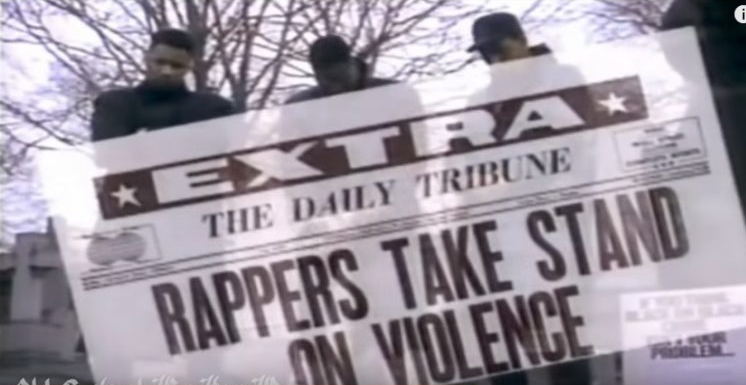
The Social and Political Resonance
Hip Hop became a megaphone for societal and political commentary. Since it's conception it has served as a voice for marginalized communities, shedding light on issues of inequality, injustice, and systemic oppression.
Addressing Social Issues
Hip Hop lyrics often serve as a reflection of the harsh realities faced by inner-city youth, addressing themes such as poverty, violence, and racial discrimination.
Artists like Tupac Shakur and N.W.A. used their music to critique societal injustices and advocate for change. Tracks like "Changes" by Tupac and "F*** Tha Police" by N.W.A. became anthems for social activism, sparking conversations about race relations and police brutality.
Empowering Marginalized Voices: Hip Hop has provided a platform for individuals from marginalized communities to share their stories and perspectives.
Artists from diverse backgrounds use their music to reclaim narratives and challenge stereotypes, empowering listeners to embrace their cultural identities and stand up against systemic oppression. Hip
Hop pioneers like Queen Latifah and Public Enemy promoted messages of self-respect, empowerment, and unity, inspiring generations of listeners to find strength in their voices.
5 Steps To Becoming A Music ProducerPolitical Advocacy
Beyond addressing social issues, Hip Hop has played a significant role in political advocacy and activism. Artists like Kendrick Lamar, Common, Talib Kweli, Yasin Bey, and Killer Mike have used their platforms to engage with pressing political issues.
Their rap music encourages civic participation and raises awareness about issues such as racial inequality, mass incarceration, and economic disparity. Hip Hop's ability to mobilize and galvanize communities has made it a potent force for social change.
What Age Should You Start Rapping?
Hip Hop's Environmental Advocacy
Hip Hop's environmental advocacy represents a powerful intersection between cultural expression and social activism, harnessing the genre's influence to raise awareness about environmental issues and inspire collective action.
From addressing climate change and pollution to promoting sustainability and conservation, Hip Hop artists have used their platforms to advocate for environmental justice and stewardship.
Addressing Climate Change
Hip Hop artists have been vocal about the urgent need to address climate change, highlighting the disproportionate impact of environmental degradation on marginalized communities.
Through their music and activism, artists like Lupe Fiasco and Common have called attention to the devastating effects of climate change, advocating for sustainable solutions and environmental policy reform.
Many artists in Hip Hop have placed a spotlight on the inequitable distribution of environmental burdens and resources. From toxic waste dumps in low-income neighborhoods to the Flint water crisis, Hip Hop artists have amplified the voices of communities affected by environmental injustice, demanding accountability and systemic change.
Sustainability and promoting eco-friendly practices and lifestyles, are also championed within the rap culture. Artists like Jaden Smith and Pharrell Williams have championed sustainability initiatives, advocating for renewable energy, zero-waste living, and environmental education.
Through their music and philanthropy, they inspire fans to adopt sustainable habits and reduce their ecological footprint.
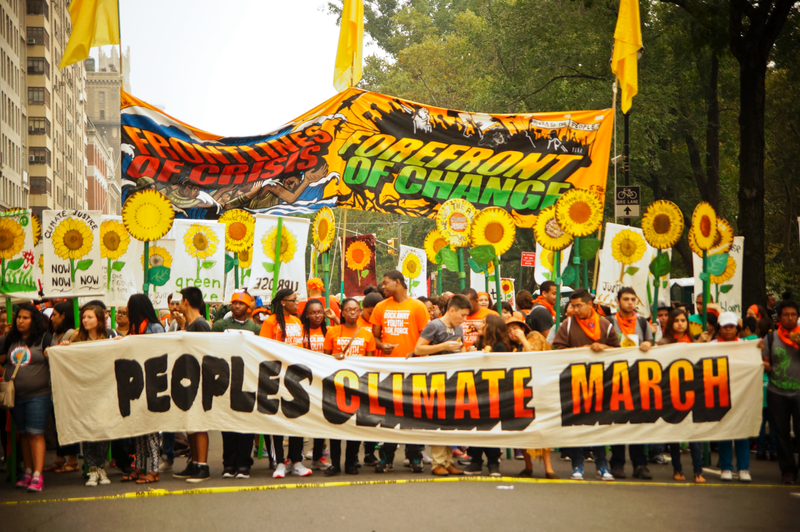
Environmental Education and Awareness: Hip Hop serves as a powerful tool for environmental education and awareness, reaching diverse audiences with messages of environmental stewardship and conservation.
Artists incorporate environmental themes into their lyrics, music videos, and live performances, sparking conversations about pressing environmental issues and inspiring action. Projects like Jay-Z's "Water for Life" campaign and Kendrick Lamar's partnership with National Geographic highlight the importance of environmental education and community engagement.
Activism and Community Engagement: Hip Hop's environmental advocacy extends beyond music to grassroots activism and community engagement. Artists organize benefit concerts, clean-up events, and environmental justice initiatives, mobilizing fans and communities to take action on local and global environmental issues.
Through their activism, Hip Hop artists demonstrate the power of collective action and the importance of environmental solidarity.
7 Steps To Becoming A Skilled Piano Player
Hip Hop's Cultural Influence
Hip Hop's cultural influence extends beyond music, permeating fashion, language, and popular culture. The genre's unique aesthetic and language have been embraced by mainstream society, shaping trends in fashion, slang, and advertising.
From street wear brands to viral dance challenges, Hip Hop culture has become synonymous with youth culture and urban cool, influencing everything from fashion runways to corporate boardrooms.
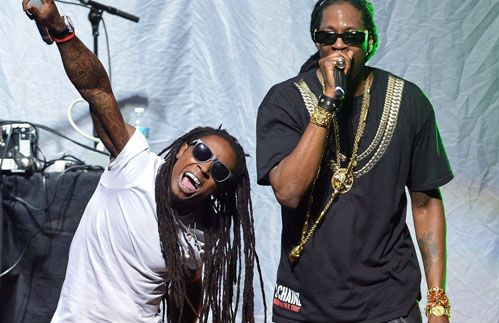
Hip Hop's reach has extended far beyond its Bronx origins, becoming a global phenomenon with a diverse and multicultural following.
Artists from around the world have embraced the genre, infusing it with their unique cultural perspectives and experiences. Hip Hop's universal themes of resilience, struggle, and triumph resonate with audiences worldwide, transcending linguistic and cultural barriers to create a global community united by a shared love for the music and culture.
In essence, the social and political resonance of Hip Hop underscores its significance as more than just a genre of music—it is a powerful tool for social change, cultural empowerment, and political activism.
As Hip Hop continues to evolve and adapt to changing times, its ability to inspire, educate, and mobilize communities remains as potent as ever, ensuring its enduring legacy as a force for positive change all over the world.
Female Rapper With The Most GrammysHip Hop as a Tool for Self-Expression
Hip Hop serves as a potent tool for self-expression, providing a platform for individuals to articulate their experiences, perspectives, and emotions in a raw and authentic manner.
Here are ways rappers use hip hop to express themselves:
- Story telling
- Graffiti
- Hip Hop Dancing
- Using street/hip hop vernacular
- Wearing urban clothing
- Cultural Identity and Authenticity
We will cover all areas that are listed throughout this article, but let's start with Mcing and story telling. At the heart of Hip Hop's self-expression lies the art of MCing, or rapping. MCs use their lyrics to narrate personal stories, share social commentary, and explore complex emotions.
Whether recounting tales of resilience in the face of adversity or expressing vulnerability and introspection, rappers use their verses as a canvas to paint vivid portraits of their lived experiences.
Artists like Tupac Shakur and Nas are renowned for their poignant storytelling, using their music to confront issues of poverty, violence, and systemic injustice.
This Is How Rappers Make Music In Prison
Cultural Identity and Authenticity
Hip Hop celebrates authenticity and individuality, encouraging artists to embrace their cultural heritage and express themselves unapologetically.
Many artists draw inspiration from their cultural backgrounds, infusing their music with elements of their ethnic heritage, language, and traditions.
This celebration of cultural identity is evident in the music of artists like J Balvin, who incorporates elements of reggaeton and Latin rhythms into his music, and Stormzy, whose lyrics reflect his experiences as a Black British artist navigating issues of race and identity.
There are other rappers like Kodak Black who proudly raps about his Haitian heritage, or Kevin Gates who often sites in his music that he is a proud Muslim. Hip Hop allows you to be proud of your cultural background and encourages you to share it with the world.
To respect and uphold your heritage in a positive way and share it with the world, this is the cultural importance of hip hop.
Rappers With Positive SongsEmpowerment and Liberation
For many artists and fans alike, Hip Hop represents a form of empowerment and liberation—a means of reclaiming agency and asserting one's voice in a world that often seeks to silence marginalized communities.
Through music, dance, and visual art, individuals find solace, strength, and a sense of belonging within the Hip Hop community. This empowerment is evident in the music of artists like Cardi B and Lizzo, who use their platforms to promote self-confidence, body positivity, and female empowerment.
Connection and Community
Hip Hop fosters a sense of connection and community, bringing together individuals from diverse backgrounds and uniting them through a shared love for the culture.
Whether through collaborative projects, cyphers, or live performances, Hip Hop creates spaces for artists and fans to connect, collaborate, and support one another.
This sense of community is central to Hip Hop's ethos, transcending geographic boundaries and fostering a global network of artists and enthusiasts united by a common passion for the culture.
In conclusion, Hip Hop serves as a powerful vehicle for self-expression, allowing individuals to assert their identities, share their stories, and connect with others in meaningful ways.
Through music, dance, and visual art, Hip Hop empowers individuals to embrace their truths, celebrate their cultural heritage, and contribute to a vibrant and inclusive community united by a shared love for the culture.
Why Do Rappers Have Face Tattoos?
The Language of Hip Hop
The language of Hip Hop is a dynamic and multifaceted aspect of the culture, characterized by its creativity and innovation.
Rooted in the vernacular of black communities, Hip Hop language encompasses a diverse range of styles, dialects, and expressions, reflecting the lived experiences and cultural influences of its creators.
Hip Hop is renowned for its use of slang and vernacular, with artists often incorporating local dialects and expressions into their lyrics.
From the streets of New York City to the neighborhoods of Los Angeles and beyond, Hip Hop language reflects the linguistic diversity of urban communities. Artists like Snoop Dogg, E-40, and Jay-Z are known for their distinctive use of slang, introducing new words and phrases that quickly become part of the cultural lexicon.
At the heart of Hip Hop language lies a love for wordplay, metaphor, and double entendre. MCs use clever rhymes, similes, and metaphors to convey complex ideas and evoke vivid imagery.
From the intricate lyricism of Fabolous to the playful wit of Kendrick Lamar, wordplay is a cornerstone of Hip Hop lyricism, inviting listeners to decipher layers of meaning and appreciate the artistry behind the rhymes.
Which Rappers Don't Write Their Songs?Hip Hop language is constantly evolving, adapting to new cultural influences, and embracing emerging trends. Artists push the boundaries of language, experimenting with new sounds, styles, and linguistic techniques.
From the rapid-fire delivery of Busta Rhymes to the melodic cadences of Drake, Hip Hop language continues to evolve, reflecting the ever-changing landscape of urban culture.
In essence, the language of Hip Hop is rich and vibrant, reflecting the creativity, diversity, and resilience of urban communities around the world.
From its roots in the streets of the Bronx to its global reach today, Hip Hop language continues to shape the cultural zeitgeist, serving as a powerful medium for self-expression, storytelling, and cultural exchange.
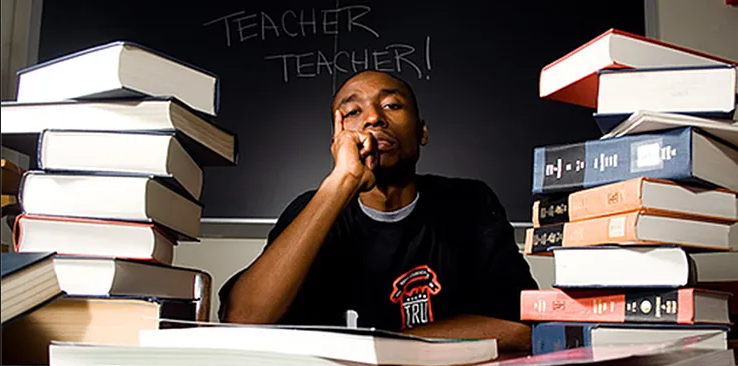
Hip Hop's Educational Impact
Hip Hop's educational impact extends far beyond its role as a form of entertainment, serving as a powerful tool for learning, empowerment, and social change.
Through its lyrical storytelling, cultural commentary, and community engagement, Hip Hop has transformed education. Hip hop has inspired students and educators alike to explore diverse topics, challenge conventional thinking, and embrace creativity in the pursuit of knowledge.
The Hip Hop culture offers a lens through which students can explore diverse cultures, histories, and perspectives. From the roots of the genre in African and African American traditions to its global impact on music, art, and fashion, it fosters cultural awareness and appreciation among students of all backgrounds.
By studying Hip Hop, students gain insights into social issues, identity, and representation - empowering them to engage critically with the world around them.
Why Most Rap Music Sound The Same
Hip Hop is a great tool for learning because it encourages critical thinking and analysis, challenging students to deconstruct complex themes and narratives embedded within its lyrics and imagery.
By examining the social, political, and economic contexts of Hip Hop culture, students develop critical thinking skills and learn to interrogate power structures, challenge stereotypes, and advocate for social justice.
Hip Hop's emphasis on creativity and self-expression encourages students to think outside the box and embrace innovative approaches to problem-solving.
Empowering Marginalized Voices
Hip Hop amplifies the voices of marginalized communities, providing a platform for students to explore issues of race, class, gender, and identity.
By studying Hip Hop artists who speak truth to power and challenge dominant narratives, students from marginalized backgrounds find validation, empowerment, and a sense of belonging. Hip Hop's emphasis on authenticity and self-expression encourages students to share their own stories and perspectives, fostering exclusivity and diversity in the classroom.
Promoting Social and Emotional Learning
Hip Hop promotes social and emotional learning by addressing themes of resilience, empathy, and personal growth.
Through its lyrics and imagery, Hip Hop artists share their struggles, triumphs, and reflections on life, inspiring students to navigate their own challenges with courage and resilience.
Hip Hop provides a space for students to explore emotions and develop social skills through collaborative projects, peer feedback, and community engagement.
Why Is There So Much Cursing In Rap?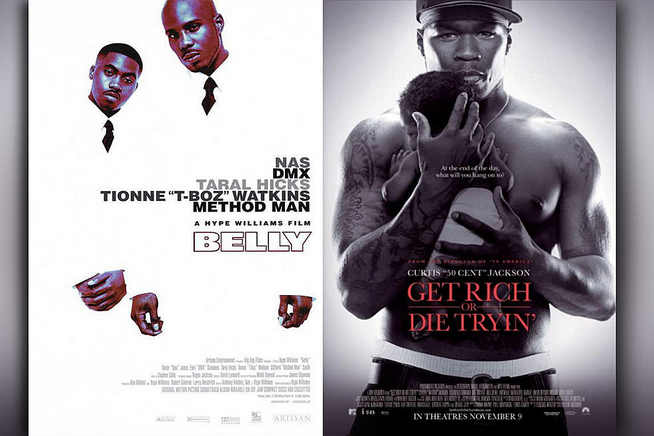
The Influence of Hip Hop Cinema
The influence of Hip Hop cinema extends beyond entertainment, shaping narratives, challenging stereotypes, and amplifying the voices of underrepresented communities.
Since its emergence in the late 1980s, Hip Hop cinema has evolved into a powerful force in popular culture, reflecting the diversity, creativity, and resilience of the Hip Hop movement.
Hip Hop cinema has provided a platform for Black, Latinx, and other marginalized communities to tell their stories and reclaim their narratives.
Films like "Boyz n the Hood," "Do the Right Thing," and "Straight Outta Compton" explore themes of identity, community, and social justice, giving voice to the experiences of urban youth and highlighting the systemic injustices they face.
By centering the perspectives of people of color, Hip Hop cinema challenges mainstream narratives and promotes greater representation and visibility on screen.
Hip Hop cinema is celebrated for its authenticity and cultural resonance, capturing the vibrancy and complexity of urban life with honesty and integrity.
Filmmakers like Spike Lee, John Singleton, and Ava DuVernay infuse their work with Hip Hop aesthetics, language, and music, creating films that resonate with audiences on a visceral level. Hip Hop cinema celebrates the beauty and diversity of urban culture, providing a mirror through which audiences can see themselves reflected on screen.
Can You Start A Rap Career In Your 30s?
Hip Hop cinema serves as a vehicle for social commentary and critique, addressing pressing issues such as racism, police brutality, economic inequality, and mass incarceration.
Films like "Fruitvale Station," "Selma," and "Blindspotting" confront systemic injustices and challenge viewers to confront uncomfortable truths about the society in which we live. Hip Hop cinema has the power to provoke thought, spark conversation, and inspire action, making it a potent tool for social change.
Hip Hop cinema's influence extends far beyond the borders of the United States, resonating with audiences around the world and inspiring a global movement of artists and filmmakers.
From France to South Africa, Brazil to South Korea, Hip Hop cinema has sparked a wave of creativity and innovation, influencing filmmakers to explore themes of identity, empowerment, and resistance in their own cultural contexts.
Music Streaming: The Future of The Music Industry
Top 12 Best Hip Hop Movies
- Juice
- Poetic Justice
- Belly
- Paid In Full
- Straight Outta Compton
- Friday
- Atlanta
- Get Rich or Die Tryin'
- Notorious
- Roxanne, Roxanne
- Brown Sugar
- House Party
FAQ's About Hip Hop Culture
Is Hip Hop Culture Limited to the United States?
Contrary to popular belief, Hip Hop transcends borders, resonating globally. Its impact is felt in diverse cultures worldwide.
What Does Hip Hop Stand For?
- Self-expression: Hip Hop provides a platform for individuals to express themselves authentically through music, dance, art, and language.
- Social Justice: Hip Hop confronts issues of inequality, racism, and systemic injustice, advocating for social change and empowerment.
- Cultural Identity: Hip Hop celebrates cultural heritage and identity, promoting pride and solidarity among diverse communities.
- Creativity and Innovation: Hip Hop encourages creativity, innovation, and self-exploration, pushing boundaries and challenging conventions.
- Community and Connection: Hip Hop fosters a sense of community and connection, bringing people together through shared experiences and mutual respect.
- Resilience and Empowerment: Hip Hop embodies resilience and empowerment, empowering individuals to overcome adversity and strive for greatness.
- Authenticity: Hip Hop values authenticity and honesty, rejecting superficiality and embracing individuality and originality.
- Global Influence: Hip Hop has a global influence, transcending borders and languages to unite people around the world in a shared cultural experience.
- Legacy and Tradition: Hip Hop honors its roots and traditions while embracing evolution and change, passing down knowledge and inspiration to future generations.
- Hope and Optimism: Hip Hop inspires hope and optimism, offering a voice to the voiceless and a vision of a better future through creativity and resilience.
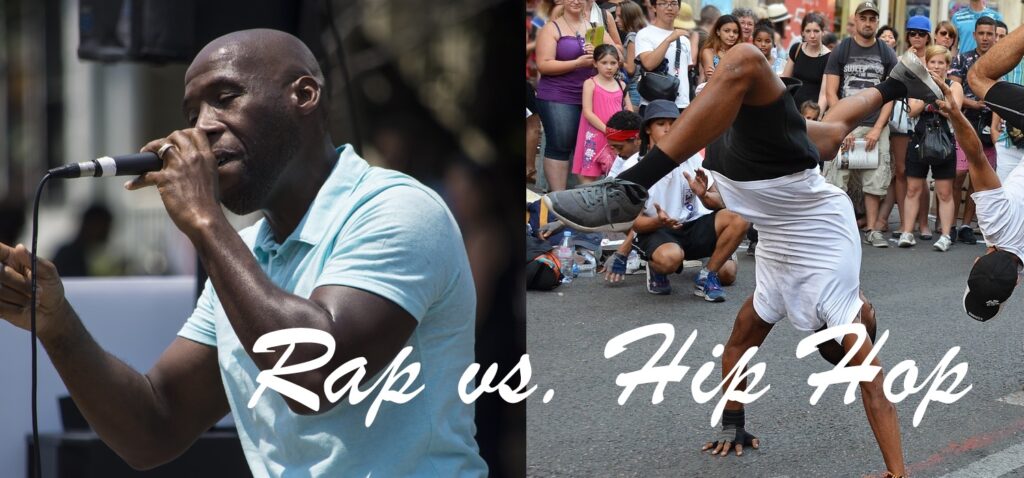
What Is The Difference Between Hip Hop and Rap?
The terms "Hip Hop" and "Rap" are often used interchangeably, but they actually refer to different elements within the broader culture.
Here's a breakdown of the key differences:
Hip Hop - Hip Hop is something you live. It's the culture celebrating the 4 Elements, which was mentioned earlier - Djing, MCing, Breakdancing, and Graffiti Art.
Hip Hop values include self-expression, authenticity, creativity, social justice, and community empowerment. It serves as a platform for marginalized voices and a means of advocating for social change.
Rap - Rap is something you do. It's Mcing, and is the music that represents hip hop. Rap is a music genre that has many sub-genres within it. These sub-genres include trap, conscious, club, gangster, emo, backpack rap, drill, underground, boom bap, pop, and soul rap.
Rap music allows artists to express themselves creatively through their lyrics, delivery, and performance. It serves as a platform for artists to share their stories, convey messages, and connect with audiences on a personal level.
What Does The Word Cypher Mean In Hip Hop?
Participants take turns improvising rhymes and lyrics over a beat or instrumental track, showcasing their lyrical prowess, flow, and creativity.
In addition to rapping, some cyphers may include individuals who specialize in beatboxing, using their vocal percussion skills to create rhythms and sounds with their mouths.
Cyphers are characterized by a spirit of collaboration and competition, with artists rapping and feeding off each other's energy and responding in real-time to the performances of others in the circle.
The performance typically involve continuous, uninterrupted performances, with each participant seamlessly transitioning between verses or beats without breaks or pauses.
While cyphers can be competitive, they are also seen as opportunities for artists to support and uplift each other, sharing constructive feedback and encouragement.
How AI Helps Rappers Make MusicConclusion
In conclusion, Hip Hop culture is a multifaceted and dynamic phenomenon that defies easy categorization.
At its core, Hip Hop is more than just music; it is a way of life, a form of expression, and a cultural movement that embodies the hopes, struggles, and aspirations of marginalized communities around the world.
From its origins in the South Bronx to its global reach today, Hip Hop culture has evolved and diversified, encompassing many art forms, styles, and identities.
Hip Hop culture is about self-expression, creativity, and empowerment. It provides a platform for individuals to tell their stories, share their experiences, and assert their identities in a world that often seeks to marginalize and silence them.
Through its music, dance, art, fashion, and language, Hip Hop culture celebrates the resilience, creativity, and diversity of urban communities, challenging stereotypes and inspiring positive change.
Hip Hop culture is also about community and connection, bringing people together across geographic, cultural, and linguistic boundaries. It fosters a sense of belonging and solidarity among those who have been marginalized or excluded, creating spaces for dialogue, collaboration, and mutual support.
Hip Hop's emphasis on authenticity, respect, and social justice fosters a spirit of camaraderie and collective uplift, empowering individuals to speak truth to power and advocate for change.

